KEAN
KEAN TUTOR-100% CERTIFIED BY STUVIA.COM
SEEKING SOLUTIONS TO HEALTH ISSUES.
- 1547
- 0
- 34
Community
- Anhänger
- Folge ich
188 Deine Reviews
1582 Sachen
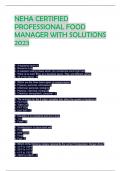
NEHA CERTIFIED PROFESSIONAL FOOD MANAGER WITH SOLUTIONS 2023
NEHA CERTIFIED PROFESSIONAL FOOD MANAGER WITH SOLUTIONS 2023
- Prüfung
- • 13 Seiten •
NEHA CERTIFIED PROFESSIONAL FOOD MANAGER WITH SOLUTIONS 2023
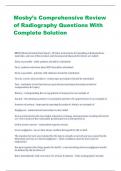
Mosby’s Comprehensive Review of Radiography Questions With Complete Solution
Mosby’s Comprehensive Review of Radiography Questions With Complete Solution
- Prüfung
- • 8 Seiten •
Mosby’s Comprehensive Review of Radiography Questions With Complete Solution
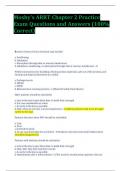
Mosby’s ARRT Chapter 2 Practice Exam Questions and Answers (100% Correct)
Mosby’s ARRT Chapter 2 Practice Exam Questions and Answers (100% Correct)
- Prüfung
- • 20 Seiten •
Mosby’s ARRT Chapter 2 Practice Exam Questions and Answers (100% Correct)
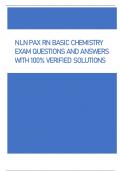
LN Pax RN Basic Chemistry exam questions and answers with 100% verified solutions
LN Pax RN Basic Chemistry exam questions and answers with 100% verified solutions
- Prüfung
- • 24 Seiten •
LN Pax RN Basic Chemistry exam questions and answers with 100% verified solutions
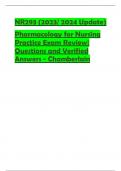
NR293 PharmacoloGY
NR293 PharmacoloGY
- Prüfung
- • 17 Seiten •
NR293 PharmacoloGY
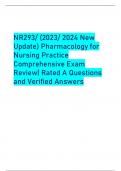
NR293 PharmacoloGY EXAM
NR293 PharmacoloGY EXAM
- Prüfung
- • 29 Seiten •
NR293 PharmacoloGY EXAM
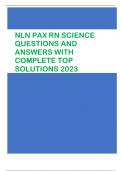
NLN PAX RN Science Questions and Answers with Complete Top Solutions 2023
NLN PAX RN Science Questions and Answers with Complete Top Solutions 2023
- Prüfung
- • 8 Seiten •
NLN PAX RN Science Questions and Answers with Complete Top Solutions 2023
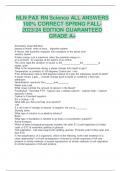
NLN PAX RN Science ALL ANSWERS 100
NLN PAX RN Science ALL ANSWERS 100
- Prüfung
- • 3 Seiten •
NLN PAX RN Science ALL ANSWERS 100
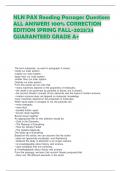
NLN PAX Reading Passages Questions ALL ANSWERS 100
NLN PAX Reading Passages Questions ALL ANSWERS 100
- Prüfung
- • 8 Seiten •
NLN PAX Reading Passages Questions ALL ANSWERS 100

NLN PAX PREP Science Spring 2023 with complete top
NLN PAX PREP Science Spring 2023 with complete top
- Prüfung
- • 47 Seiten •
NLN PAX PREP Science Spring 2023 with complete top

CHAMBERLAIN COLLEGE OF NURSING (HESI A2) TEST BANK ENTRANCE EXAM - QUESTIONS & ANSWERS (SCORED A+) UPDATED VERSION
Chamberlain College of Nursing (HESI A2) - (ANATOMY & PHYSIOLOGY (A&P)) Scored 96% QUESTIONS & ANSWERS LATEST UPDATE 2023
HESI RN PEDIATRICS PROCTORED EXAM - PACK FOUR FILES & SHORT NOTES TO PREPARE FOR YOUR EXAM Updated 2023
HESI RN MED SURG EXAM PACK - EXAM MERGED FROM 2021/2022/2023 ACTUAL EXAMS. NEXT GEN-ACTUAL EXAM REVIEW MED SURG EXAM PACK BEST FOR 2023
ATI TEAS 6 Reading, Math, Science & English Study Guide - ALL SECTIONS PREP with Questions & Answers (Scored 98%) Updated 2023